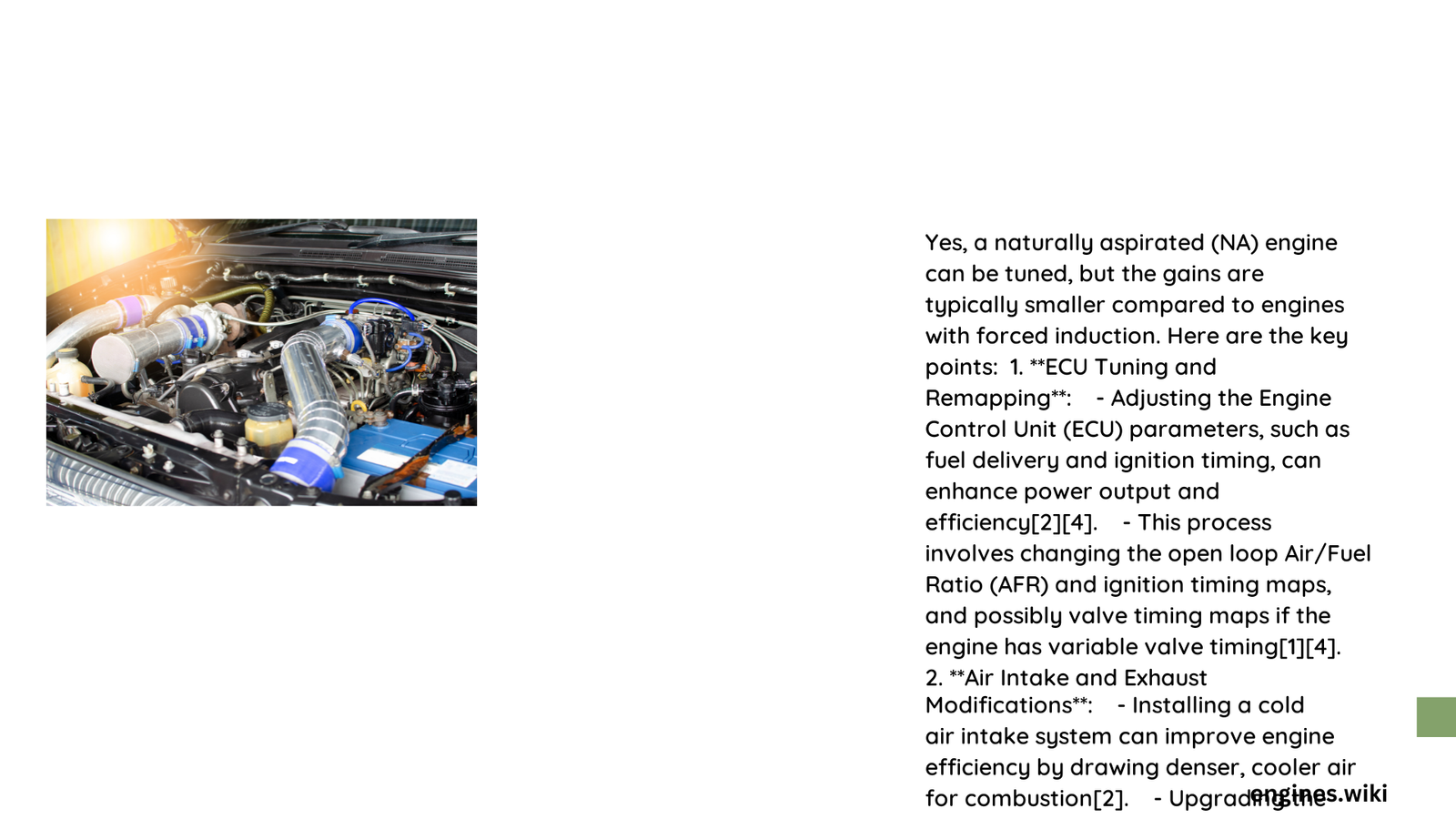Naturally aspirated engines can indeed be tuned to extract additional performance through strategic modifications. Performance enthusiasts can leverage multiple techniques like air intake upgrades, exhaust system enhancements, camshaft modifications, and ECU remapping to increase horsepower and optimize engine efficiency. By understanding the intricate balance of airflow, fuel delivery, and mechanical adjustments, owners can unlock hidden potential in their naturally aspirated powerplants.
What Makes Naturally Aspirated Engine Tuning Possible?
Naturally aspirated engines offer significant tuning potential through carefully planned modifications. Unlike forced induction engines, these powerplants rely entirely on atmospheric pressure, making precision modifications crucial for performance gains.
How Can Air Intake Systems Improve Performance?
Cold Air Intake Benefits
- Draws denser, cooler air into engine
- Reduces intake air temperature
- Increases oxygen density
- Potential horsepower gain: 2-5 hp
| Intake Type | Cost Range | Performance Gain | Difficulty |
|---|---|---|---|
| Basic Filter | $50-$150 | 1-3 hp | Low |
| Cold Air Intake | $200-$500 | 3-5 hp | Medium |
| Performance Intake | $500-$800 | 5-7 hp | High |
What Role Do Exhaust Modifications Play?
Aftermarket exhaust systems can significantly reduce backpressure, allowing exhaust gases to exit more efficiently. Key modifications include:
- Headers: Improve exhaust flow
- Cat-back Systems: Reduce restrictions
- Performance Mufflers: Optimize sound and flow
Can Camshaft Upgrades Enhance Engine Performance?
High-performance camshafts can dramatically improve engine breathing by:
– Increasing valve lift
– Extending valve duration
– Optimizing valve timing
– Potential power gain: 10-20 horsepower
How Effective Is ECU Tuning?
ECU remapping offers precise performance optimization by:
– Adjusting fuel maps
– Modifying ignition timing
– Removing factory restrictions
– Potential power increase: 10-15 horsepower
What Are Compression Ratio Considerations?
Increasing compression ratio requires:
– High-octane fuel
– Precise engineering
– Careful component selection
– Potential power gain: 5-10 horsepower
Are There Limitations to Naturally Aspirated Tuning?
Performance limitations include:
– Practical power density cap
– Diminishing returns
– Component compatibility
– Engine architecture constraints
Key Performance Metrics

- Typical Power Gain: 20-50 horsepower
- Cost Range: $500-$3,000
- Complexity: Medium to High
- Recommended for: Experienced enthusiasts
Crucial Tuning Recommendations
- Always match modifications
- Use high-quality components
- Consult professional tuners
- Consider long-term reliability
- Verify warranty implications
Final Performance Insights
Naturally aspirated engine tuning requires a holistic approach, balancing mechanical upgrades with precise electronic calibration. Success depends on understanding your specific engine’s characteristics and implementing well-researched modifications.
Reference:
– Engine Tuning Techniques
– Naturally Aspirated Performance Guide
– Advanced Engine Modifications
